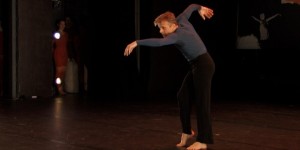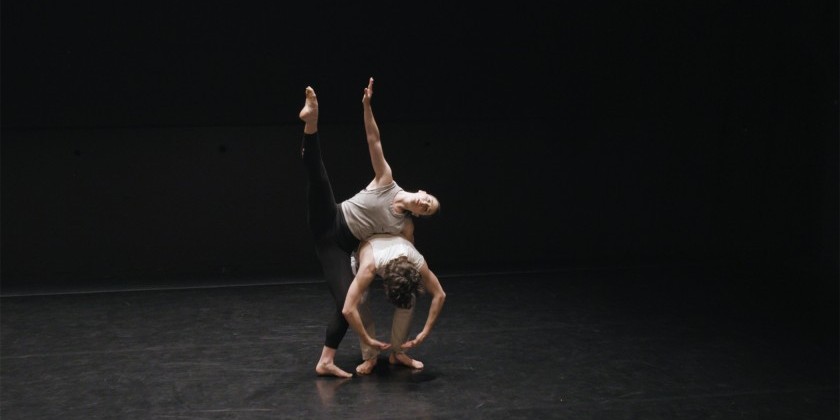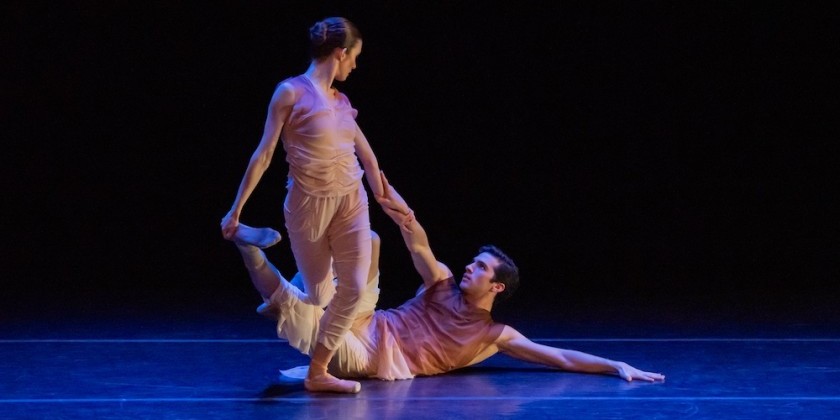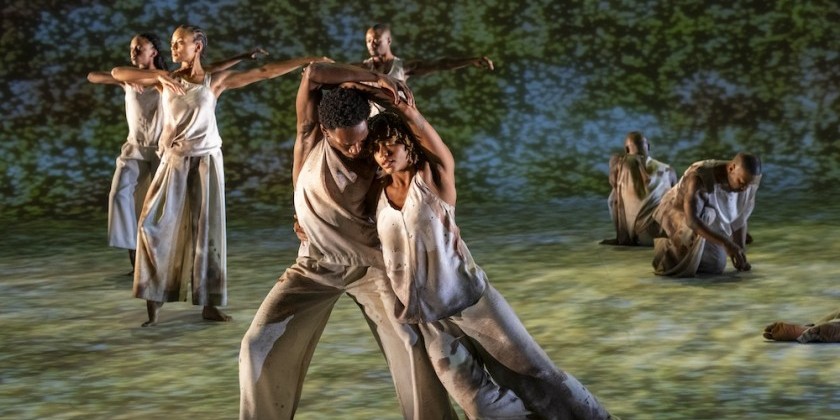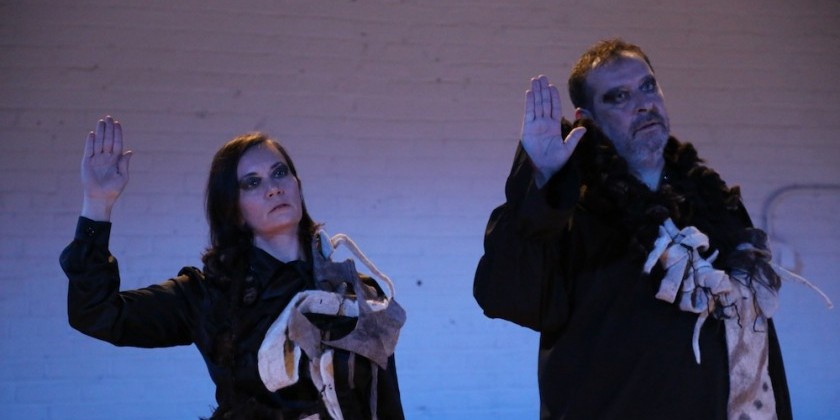IMPRESSIONS: New York Theatre Ballet in "Legends & Visionaries" at Florence Gould Hall
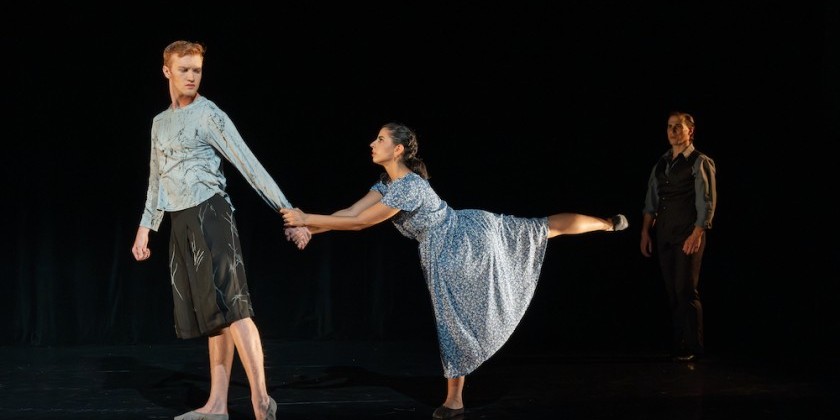
A World Premiere by Steven Melendez, with Repertory by David Gordon, Douglas Dunn, Merce Cunningham, and Amanda Trieber
Artists: Charlotte Anub, Julian Donahue, Giulia Faria, Ethan Huffman, Jonathan Leonard, Emely León Rivas, Mónica Lima, Kieran McBride, Nathan Rommel, Charles Rosario, Sarah Stafford
-
A Plain Romance Explained/Keith’s Solo (1984) // Choreography and text by David Gordon // Staged by Karen Graham
-
Roses (1990) // Choreography by Douglas Dunn // Staged by Emily Pope and Timothy Ward //Music by Sergei Rachmaninoff // Recording Artist: Claire Huangei
-
Sideslip (2023) // Choreography by Amanda Treiber // Art by Marcy Rosenblat // Music by Louis Andriessen //Recording Artist: Ralph van Raat
-
DNR (World Premiere) // Choreography by Steven Melendez // Music by David K. Israel
-
Scramble (1967) // Choreography by Merce Cunningham // Music by Toshi Ichiyanagi //Costumes reconstructed by Carmella Lauer after the design by Frank Stella //Lighting by Beverly Emmons //Staged by Jennifer Goggans
Presented at Florence Gould Hall at the French Institute Alliance Française
As a small-scale repertory company with a community-driven mission, New York Theatre Ballet (NYTB) occupies a unique space in the New York dance landscape. With an ensemble of just eleven high-caliber dancers, the company presents classical ballet and modern dance masterpieces alongside new works by contemporary choreographers. The company tours locally and nationally in addition to maintaining robust education and outreach programs to cultivate new generations of dancers and audiences. NYTB’s Artistic Director Steven Melendez is also a central subject in LIFT, a recent documentary that chronicles pathways from home insecurity to dance, including his own experiences growing up in a Bronx shelter.
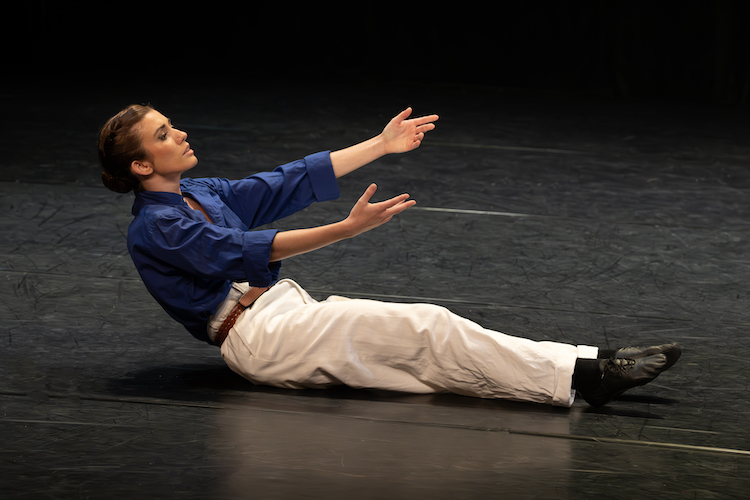
NYTB does a lot with comparatively little when scaled against the giants of ballet and modern dance in New York, but if the tradeoff for a small venue and modest production value is a packed house full of enthusiastic supporters for a well-rounded program of intimate dances, I’ll take it. This was precisely my experience of their “Legends and Visionaries” program at the French Institute Alliance Française’s Florence Gould Hall. With repertory works by well-known modern dance choreographers David Gordon, Douglas Dunn, and Merce Cunningham and new works by NYTB’s own Steven Melendez and former dancer Amanda Treiber, the program did not lack for diversity of expression, and the dancers rose admirably to every challenge.
The program opened with Gordon’s A Plain Romance Explained/Keith’s Solo, which explores the choreographic process through a fusion of movement and spoken text. Dancers Mónica Lima and Julian Donahue alternate in the solo, which enters the mind of the choreographer in the act of imagining, composing, and revising a duet. The artist’s inner dialogue is vocalized with every step, working through invisible partnering moves, dramatic entrances, grand gestures, gauntlets of jumps, cheeky poses, and the inevitable unknown “something something” in between. As the solo progresses and picks up pace, the dancer’s labored breathing becomes an expression of the choreographer-character’s rushing mind full of misgivings and misdirections. The premise, which could easily veer into the realm of camp, shines in this confident and sharply-timed portrayal.
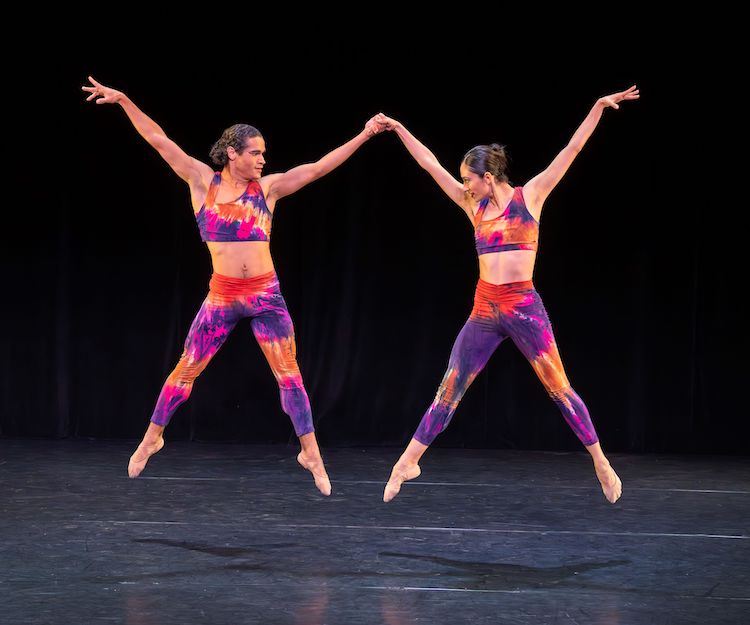
Dunn’s 1990 Roses, a duet danced by Kieran McBride and Charles Rosario, opens with a study in contrasts as McBride’s elegant sways, ripples, and waves converse with Rosario’s powerful jumps and precise turns. Set to Rachmaninoff piano preludes, the two dancers lend their contrasting physical and interpretive dynamics to heavy chords and lilting runs alike. As their energy builds, lines begin to blur as they engage in playful challenges, mirroring games, and daring partnered maneuvers. Dunn’s movement language generously occupies multiple planes of motion with ease of momentum and clarity of form, exuding a warmly kinetic sensibility. The arc of the duet seems to wink at the traditional structure and gender representations in the classical ballet pas de deux—a sly parody that is made more effective by the merit of its composition and style.
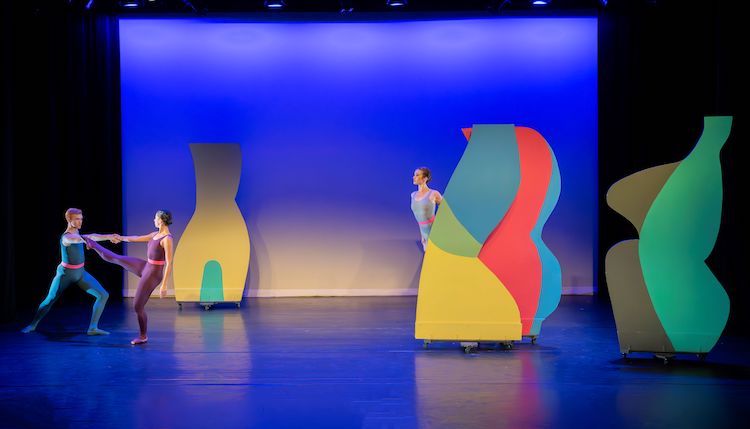
Julian Donahue, Giulia Faria, and Mónica Lima in Amanda Treiber’s “Sideslip.” Photo by Richard Termine
Sideslip, Treiber’s new dance for four artists and four large-scale rolling set pieces by Marcy Rosenblat, treads into the realm of abstraction with gentle grace and keen focus. The sculptural set pieces lend color and texture to an otherwise simple costume and stage design, animated into action by the dancers who wheel them around the stage to hide and emerge at surprising angles. Piano compositions by Louis Andriessen provide a moody musical backdrop and dramatic impetus for the dancers’ movement without overwhelming the action as they weave a continuous thread of solos, duets, and trios. Motifs appear like signposts: delicate flicks of hands spread in a high vee to activate graphic fourth and fifth positions of the legs and feet—en pointe for Giulia Faria and Mónica Lima—while a single arm extended with an open-palmed hand indicates an assertion of presence and steady striving. The cast demonstrates their virtuosity most adeptly in their confident stillness, with Faria particularly striking in her calmly regal command and unforced symmetry of line.
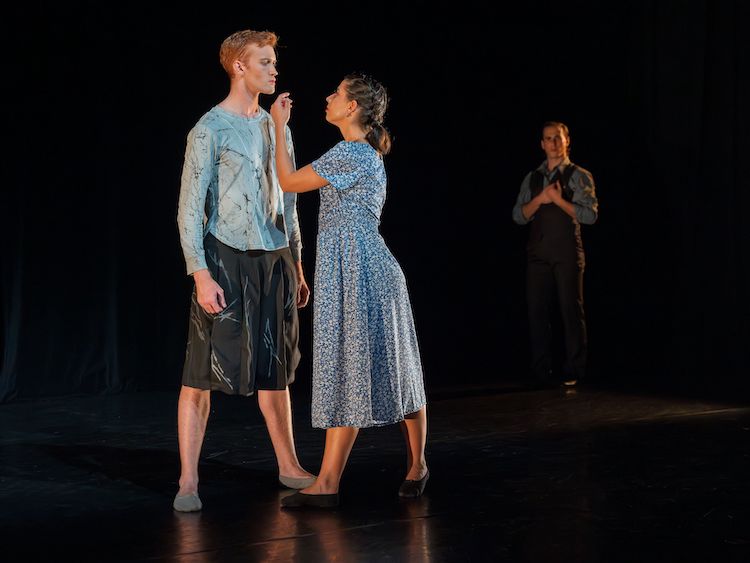
Julian Donahue and Giulia Faria in Steven Melendez’s “DNR.” Photo by Richard Termine.
In a turn from the abstract to the personal, Melendez offers DNR, a quiet memorial to the dual tragedies of his father’s absence and his mother’s death. The piece was created in collaboration with musician David K. Israel as part of NYTB’s Letters To My Father project, an ongoing multidisciplinary commissioning platform centered on relationships between sons and fathers. Israel, an accomplished composer, musician, and storyteller, played the score live on guitar with an array of electronic effects. Melendez’s choreography harnesses the power of slow-motion expressive minimalism to build tension, convey character, and articulate relationships among the dance’s three characters, one of whom—the father figure—stands just outside the frame of the drama as an estranged spectator. Faria’s portrayal of the mother is earnest and unflinching to the moment of her death, while as the son, Julian Donahue’s attentive partnering and impassioned energy reveal his vulnerability in confronting loss, grief, and frustration. DNR is as stark as can be expected given its weighty subject matter, though it might take fuller advantage of the dancers’ technical skill and capacity for dramatic nuance.
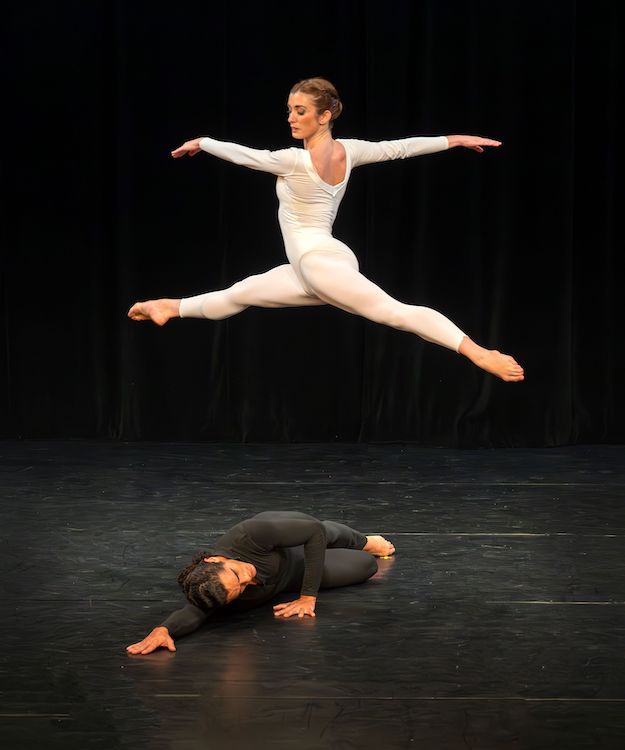
Mónica Lima and Charles Rosario in Merce Cunningham’s “Scramble.” Photo by Richard Termine.
Closing the program was Cunningham’s 1967 Scramble, here in its original configuration for eight dancers. The piece gets its name from a quirk in its composition: Scramble’s 18 sections can be arranged in any order—scrambled, as it were—to fill the 28 minutes of Toshi Ichiyanagi’s score. Cunningham incorporated elements of chance into the structure and composition of his dances in different ways throughout his prolific career, and Scramble exemplifies a balanced union of methodological and technical rigor and play. Clad in a colorful lineup of single-tone unitards or matching leotards and tights, the barefoot dancers fill the stage with a forest of sculptural poses, brief unisons, and flurries of group dances in Cunningham’s signature architecturally athletic style. Each distinct section showcases power in lofty, explosive jumps—Rosario’s soaring batterie and Ethan Huffman’s pendular ballon were particular highlights—and strength in clear-cut articulations, evidenced in Faria’s deep, elastic lunges and a tensely unspooling solo for the unflappably serene Lima. On the whole the dancers look tactfully at home in the work, which challenges the ballet-trained dancer’s typical expressive register and use of spinal articulation, and their solos, group dances, and assorted entanglements carry an admirable frankness and commitment to their craft.
NYTB’s small-but-mighty organizational model and curation and commissioning initiatives merit recognition for their achievements in preserving and advancing classical ballet and modern dance forms in conversation with emerging contemporary voices. This pairing of “Legends and Visionaries” speaks volumes of the wealth of historical lineage, the promise of the future, and the dynamism of the here and now.






